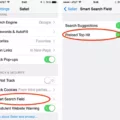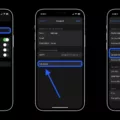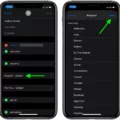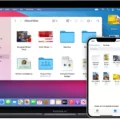The iPhone’s Mail app is a powerful tool for managing your emails on the go. However, if you’re used to being able to easily delete messages by swiping, you may find that this feature is not available by default. In this article, we’ll explore how to enable the swipe to delete option in the Mail app, as well as discuss why Apple made this change in iOS 15.2.
By default, when you swipe on an email in the Mail app, you’ll see the option to “Archive” the message. This means that the email will be removed from your inbox, but it will still be accessible in the “All Mail” or “Archive” folder. This can be useful if you want to keep a record of all your emails, but it may not be ideal if you prefer to delete messages outright.
To enable the swipe to delete option in the Mail app, you’ll need to make a quick adjustment in the Settings menu. Here’s how:
1. Open the Settings app on your iPhone.
2. Scroll down and tap on “Mail”.
3. Under the “Accounts” section, tap on the email account you want to modify.
4. Scroll down and find the “Swipe Options” section.
5. Tap on “Archive” and choose “Delete” from the list of available options.
6. Tap “Done” to save your changes.
Once you’ve made this adjustment, you’ll now see the option to “Delete” when you swipe on an email in the Mail app. This will permanently remove the email from your inbox and cannot be undone, so make sure you’re certain before swiping to delete.
Now, let’s discuss why Apple made the decision to remove the swipe to delete option in iOS 15.2. According to a senior engineer at Apple, this change was made to improve usability and reduce accidental deletes. By defaulting to the “Archive” option instead of “Delete”, Apple aims to prevent users from accidentally losing important emails.
While some users may find this change inconvenient, it’s important to note that Apple has prioritized usability and user experience in their decision. By making it slightly more difficult to delete emails, they aim to prevent accidental deletions and ensure that users have a chance to review their emails before permanently removing them.
Enabling the swipe to delete option in the iPhone’s Mail app is a simple process that can be done in the Settings menu. However, it’s worth considering Apple’s reasoning behind the default “Archive” option. By defaulting to archiving instead of deleting, Apple aims to protect users from accidentally losing important emails. Whether you prefer the swipe to delete option or the default archive option, it’s important to adjust your settings to suit your own preferences and workflow.
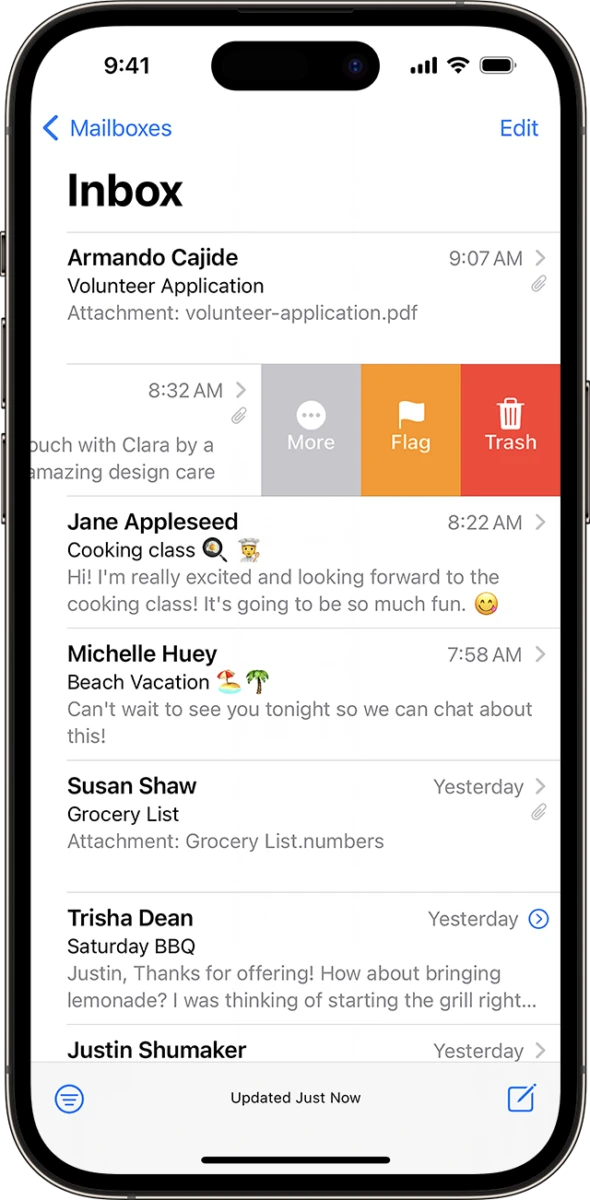
Why Can’t You Swipe to Delete Email On iPhone?
To enable the swipe to delete option in the iPhone’s Mail app, you need to make a small adjustment in the Settings. By default, the swipe gesture in the Mail app is set to “Archive” rather than “Delete.” This means that when you swipe on an email, it will be archived and moved to the All Mail folder instead of being deleted permanently.
To change this setting and enable swipe to delete, follow these steps:
1. Open the Settings app on your iPhone.
2. Scroll down and tap on the “Mail” option.
3. In the Mail settings, tap on “Accounts.”
4. Select the email account for which you want to enable swipe to delete.
5. Tap on the account name again to access its settings.
6. Scroll down and find the “Archive Messages” option.
7. By default, this option is selected with a checkmark. Tap on it to remove the checkmark and disable archiving.
8. Once you disable archiving, the swipe options will change, and you’ll see the “Delete” option when you swipe on emails in the Mail app.
With the swipe to delete option enabled, you can now easily delete emails by swiping left or right on them in the Mail app. It’s worth noting that deleting an email will move it to the Trash folder, where it will be stored temporarily before getting permanently deleted.
Why is Trash Not a Swipe Option in Mail?
In iOS 15.2, Apple made a deliberate decision to remove the swipe-to-trash option in the Mail app. This change was implemented to enhance user experience and prevent accidental deletions. By eliminating the swipe-to-trash feature, Apple aims to reduce the likelihood of users unintentionally discarding important emails.
The removal of swipe-to-trash in Mail was driven by a desire to increase usability. Apple recognized that many users were accidentally deleting emails while performing common actions such as scrolling or navigating through their inbox. This could lead to frustration and potential loss of important information.
By removing the swipe-to-trash option, Apple intends to provide a more intuitive and secure email experience. Users can now rely on alternative methods to delete emails, such as tapping on the trash icon or using the edit mode to select multiple emails for deletion. These methods offer a more deliberate and controlled approach, minimizing the risk of accidental deletions.
Apple’s decision to eliminate swipe-to-trash aligns with their commitment to user-centric design and continuous improvement. The company regularly evaluates user feedback and behavior to refine their software and optimize the overall user experience.
How Do You Change The Swipe Settings On Your iPhone?
To change the swipe settings on your iPhone, you can follow these steps:
1. Start by opening the “Settings” app on your iPhone. You can usually find this app on your home screen, represented by a gear icon.
2. Once you are in the Settings app, scroll down and tap on the “Accessibility” option. It is typically represented by a white icon with a person inside a blue circle.
3. In the Accessibility settings, locate and tap on the “Touch” option. This will bring up various touch-related settings for your device.
4. Within the Touch settings, you will find an option called “Touch Accommodations.” Tap on this option to access more specific touch-related adjustments.
5. On the Touch Accommodations screen, you will see a toggle switch at the top. Make sure this switch is turned on to enable touch accommodations.
6. Once you have enabled touch accommodations, scroll down to find the “Swipe Gestures” section. Tap on it to access the swipe settings.
7. In the Swipe Gestures settings, you can adjust various options related to swiping on your iPhone. For example, you can change the sensitivity of swipes or enable/disable specific swipe gestures.
8. To adjust the sensitivity of swipes, tap on the “Swipe Sensitivity” option. You will be presented with a slider that allows you to make swipes more or less sensitive based on your preference. Slide it to the left for less sensitivity or to the right for more sensitivity.
9. If you want to enable or disable specific swipe gestures, you can do so by toggling the switches next to each gesture listed in the Swipe Gestures settings. This allows you to customize the swiping behavior of your iPhone according to your needs.
10. After making any desired changes to the swipe settings, you can exit the Settings app. Your new swipe settings will now be in effect on your iPhone.
Remember that these instructions are based on the latest version of iOS, and the exact steps may vary slightly depending on the version of iOS installed on your iPhone.
Conclusion
The ability to swipe to delete messages in the iPhone’s Mail app can greatly enhance the user experience and streamline email management. However, it is important to note that this option is not enabled by default. By default, the Mail app offers the option to “Archive” emails instead of deleting them. To enable the “Delete” option, users can navigate to the “Accounts” section in the Settings menu.
It is worth mentioning that with the release of iOS 15.2, Apple made the decision to remove the swipe to trash option in Mail. This change was implemented to improve usability and reduce the likelihood of accidental deletion of important emails. While some users may prefer the convenience of swiping to delete, it is important to balance this with the need to avoid unintentional deletions.
For those who still wish to have the swipe to delete option, alternative methods can be explored. For example, users can adjust settings for taps, swipes, and multiple touches in the Accessibility menu. By enabling Touch Accommodations, users can customize their touch gestures to better suit their preferences.
The ability to swipe to delete messages in the iPhone’s Mail app can be a valuable feature for those who prefer a more efficient email management process. However, it is important to consider the potential risks of accidental deletions and to adjust settings accordingly to meet individual needs and preferences.


